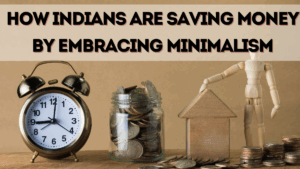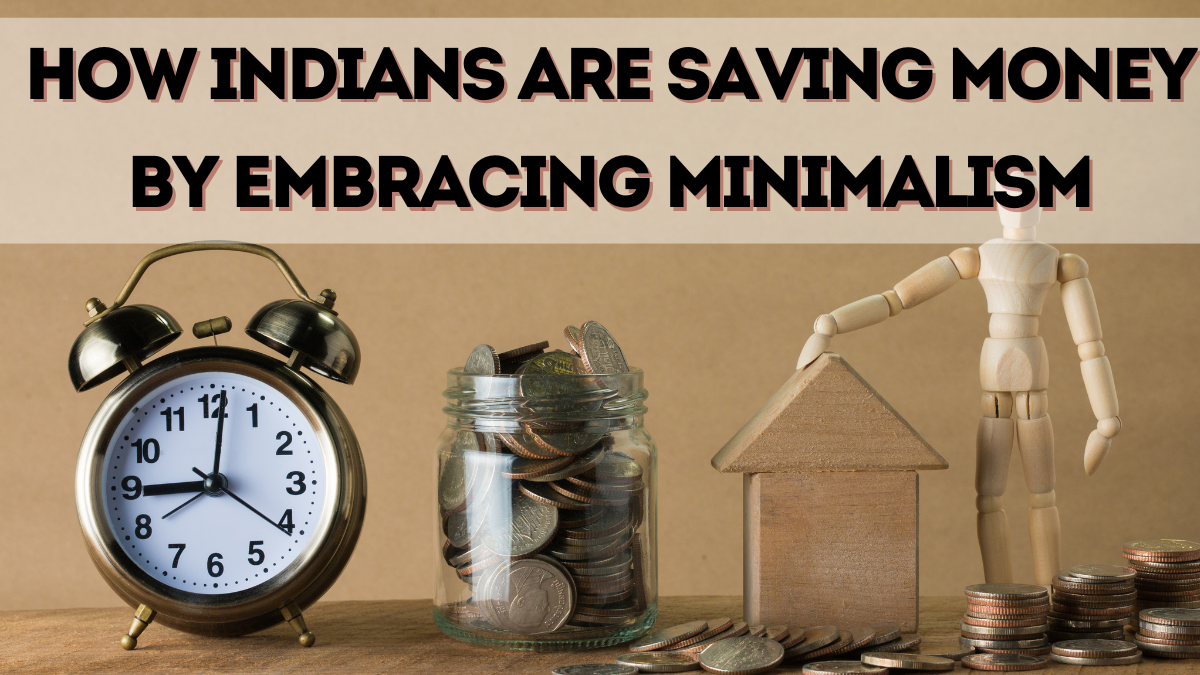In a world driven by consumerism, Indians are beginning to realize that true wealth lies not in owning more but in owning less. By 2025, the concept of minimalism has evolved from being a niche philosophy to a mainstream lifestyle choice in India. The trend of minimalism saving money India 2025 is now being widely embraced, as people look for ways to cut unnecessary expenses, focus on essentials, and live more meaningful lives.
Minimalism is not about deprivation. It is about intentional living—choosing quality over quantity and valuing experiences over material possessions. For Indian households facing rising costs of housing, education, and healthcare, minimalism is proving to be both financially smart and mentally refreshing.

Why Minimalism Is Gaining Popularity in India
Several factors are fueling the rise of minimalism in 2025:
-
Rising Cost of Living: Inflation has made Indians more conscious about cutting down wasteful spending.
-
Mental Health Awareness: Clutter-free living is being linked to reduced stress and improved focus.
-
Sustainability Concerns: Eco-conscious millennials prefer minimal consumption to reduce their carbon footprint.
-
Digital Influence: Social media influencers and finance bloggers are spreading awareness about minimalism as a lifestyle choice.
-
Global Inspiration: Exposure to international trends is motivating Indians to adapt minimalism to their cultural context.
This shift has led to a movement where financial minimalism is not just about saving money but also about achieving freedom and peace of mind.
How Minimalism Helps Indians Save Money
Minimalist living directly impacts finances by reducing unnecessary expenses. Here’s how it works:
-
Cutting Down on Shopping: Instead of buying multiple fast-fashion items, minimalists invest in a few high-quality clothes.
-
Reducing Home Clutter: Families are avoiding impulsive purchases of furniture, décor, and gadgets.
-
Smart Food Choices: Cooking at home and avoiding frequent restaurant visits lowers monthly costs.
-
Avoiding Lifestyle Debt: Minimalists reject the pressure of keeping up with trends, reducing credit card and loan burdens.
-
Focus on Essentials: Spending shifts to necessities such as education, healthcare, and investments.
By adopting this lifestyle, Indians are saving thousands every month, which can be redirected into long-term investments.
Examples of Savings Through Minimalism
To put the savings into perspective, here are some examples:
| Expense Area | Average Monthly Spending Before Minimalism | Spending After Minimalism | Savings Per Month |
|---|---|---|---|
| Clothing & Fashion | ₹10,000 | ₹4,000 | ₹6,000 |
| Eating Out | ₹8,000 | ₹3,500 | ₹4,500 |
| Home Décor & Gadgets | ₹12,000 | ₹5,000 | ₹7,000 |
| Miscellaneous | ₹5,000 | ₹2,000 | ₹3,000 |
Total Savings Per Month: ₹20,000
Over a year, these savings add up to ₹2.4 lakh, proving how powerful minimalism can be for financial freedom.
Minimalism in Urban vs Rural India
Interestingly, minimalism is being practiced differently across regions.
-
Urban India: In cities like Mumbai, Delhi, and Bangalore, minimalism is often a conscious choice to balance hectic lifestyles. Professionals are decluttering wardrobes, living in smaller apartments, and focusing on experiences like travel.
-
Rural India: While rural households have traditionally practiced minimalism, in 2025 they are blending it with modern needs by avoiding excessive consumerism and sticking to essential purchases.
This dual adoption shows that minimalism is not limited to a specific group but is adaptable to various lifestyles.
Benefits Beyond Money
The financial minimalism movement in India has benefits that go beyond saving money:
-
Better Mental Health: A clutter-free home creates a peaceful environment.
-
Time Efficiency: Less shopping and fewer belongings reduce time spent on maintenance.
-
Stronger Relationships: Families focus more on bonding experiences than material possessions.
-
Eco-Friendly Living: Minimalism reduces waste and aligns with sustainability goals.
-
Focus on Investments: Money saved is redirected towards SIPs, mutual funds, or retirement planning.
How to Start Practicing Minimalism in 2025
Adopting minimalism may seem difficult, but small steps can create big results:
-
Start with decluttering one area of your home at a time.
-
Follow the “one in, one out” rule—buy something new only if you remove an old item.
-
Set a monthly budget and stick to essential purchases.
-
Invest in experiences like travel, hobbies, or learning instead of accumulating items.
-
Track your savings and see how minimalism improves financial health.
Mobile apps and finance trackers in 2025 are also helping Indians monitor their expenses, making minimalism easier to implement.
Final Thoughts
The minimalism saving money India 2025 trend highlights how Indians are redefining wealth and happiness. By focusing on essentials, avoiding debt, and investing in experiences, people are finding balance between financial security and personal satisfaction. This movement is not just about saving money but also about creating a lifestyle that values peace, sustainability, and long-term growth. In a consumer-driven world, minimalism offers Indians the freedom to live better with less while securing a stronger financial future.
FAQs
How does minimalism help save money in India?
It reduces unnecessary expenses on shopping, dining out, and lifestyle purchases, helping households save thousands each month.
Is minimalism only for the wealthy?
No, minimalism is for everyone. It is more about making conscious choices than about income levels.
Can minimalism work in Indian urban lifestyles?
Yes, many urban professionals are embracing minimalism to cope with rising costs and busy schedules.
Does minimalism mean giving up luxuries completely?
Not at all. Minimalism means choosing meaningful luxuries and cutting out wasteful spending.
How much can an average Indian save with minimalism in 2025?
On average, families can save up to ₹2–3 lakh annually by adopting minimalist habits.
Click here to know more.
